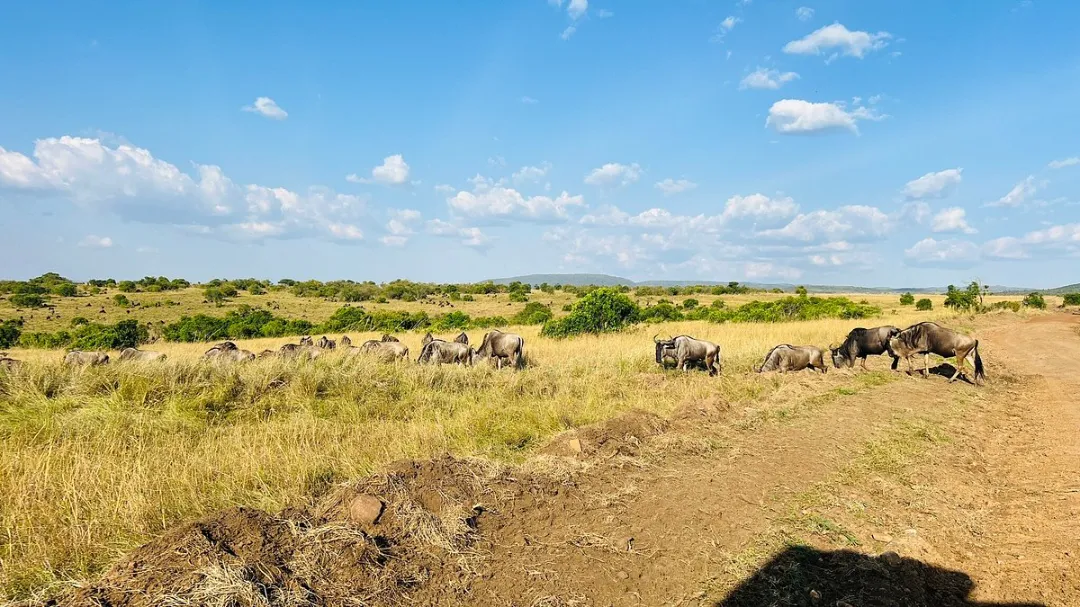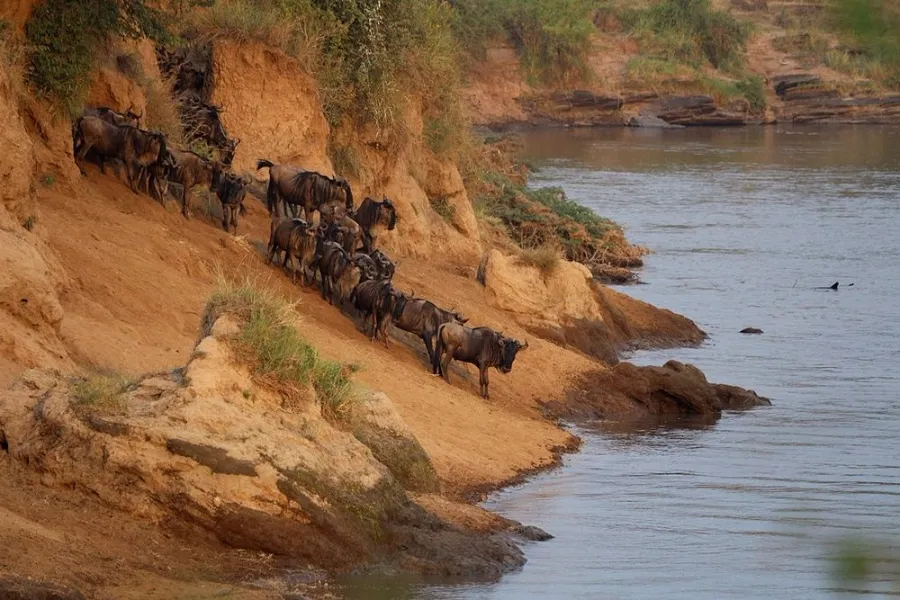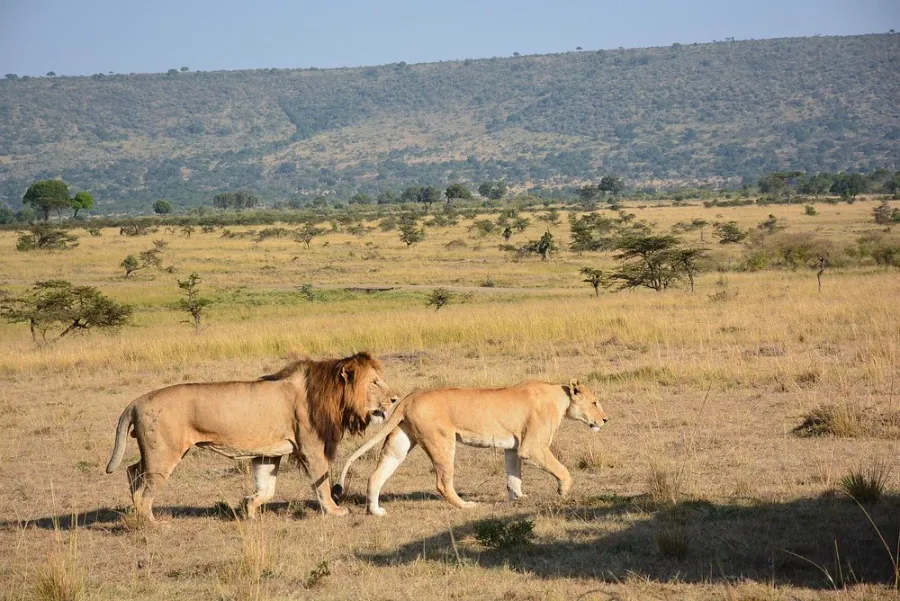Conservation Masai Mara: Effective Strategies for Wildlife and Community Sustainability
Table of Contents
Conservation in the Masai Mara protects wildlife and supports local communities. Learn about the strategies and efforts that make Conservation Masai Mara successful, including community roles and anti-poaching measures.
Key Takeaways
The Mara Game Reserve and local Maasai communities have established effective conservation strategies that balance wildlife protection and community needs, contributing to the region’s biodiversity.
Successful anti-poaching initiatives in the Mara Triangle have led to significant reductions in illegal wildlife activities through collaboration between local communities and national security forces.
Community-led conservation models in the greater Masai Mara ecosystem have demonstrated the importance of local involvement in wildlife management, contributing to sustainable practices and economic benefits for Maasai landowners.
Origins of Masai Mara Conservation

Conservation in the Masai Mara started with the creation of the Mara Game Reserve, a bold move to protect the area’s diverse wildlife. This vast wildlife sanctuary, now expanded to 1,821 square kilometers, stands as a testament to ongoing conservation efforts dedicated to preserving the region’s rich biodiversity.
Local Maasai communities have played a pivotal role in managing the adjacent conservancies through Group Ranch Trusts. These trusts have effectively coordinated conservation efforts, ensuring that the needs of both wildlife and the local population are met. The symbiotic relationship between the local maasai community and their land has been instrumental in the success of these initiatives, as Maasai landowners protect biodiversity.
In 2023, the Masai Mara Management Plan was introduced, outlining essential practices to enhance conservation efforts while balancing tourism and community needs. This comprehensive plan addresses the challenges faced by the reserve and its surrounding conservancies, emphasizing sustainable practices that benefit both the environment and the people who call this land home.

Mara Triangle: A Model for Anti-Poaching Efforts
The Mara Triangle, a crucial segment of the Mara Game Reserve, stands as a formidable barrier against poachers entering from Tanzania. Since its establishment in 2001, the Mara Conservancy has implemented a successful anti-poaching strategy that has led to the arrest of over 4,155 poachers and the removal of more than 44,846 snares. These combined efforts have substantially decreased illegal wildlife activities, ensuring better conservation outcomes.
The triangle’s success in deterring poachers is a testament to the dedication and collaboration of the local communities and national security forces. This model of Mara Triangle anti-poaching efforts serves as an inspiration for other protected areas, demonstrating that with effective strategies and community involvement, the fight against poaching can be won.

The Role of Masai Mara Conservancies
The Masai Mara Wildlife Conservancies Association (MMWCA) has been at the forefront of promoting effective conservation and sustainable tourism in the greater Mara ecosystem. Collaborating with Masai landowners, the MMWCA works to protect the region’s biodiversity while boosting local prosperity. This partnership model encourages local community involvement in local wildlife sustainability, ensuring conservation efforts benefit both nature and people.
One of the key initiatives supported by the MMWCA is the establishment of Community Game Scouts. These scouts play a crucial role in managing wildlife security and fostering positive engagements between the masai mara conservancies and local communities. Their presence has significantly enhanced cooperation in managing the conservancies, leading to improved local wildlife protection.
The impact of these conservancies is immense, covering over 400,000 acres and involving more than 14,500 Masai landowners in local wildlife protection and tourism. Offering direct benefits such as lease fees to landowners, the conservancies encourage local communities to actively participate in conservation efforts, creating a sustainable model for wildlife and community coexistence.

Income Generation for Masai Landowners
TThe conservancies in the Masai Mara provide a reliable source of income for Masai landowners living in the region by leasing their land to safari operators. This arrangement ensures a consistent monthly income for approximately 3,000 landowners, benefiting a total of around 24,000 individuals. The financial stability provided by these leases has had a transformative impact on local communities, supporting their livelihoods and promoting sustainable land use practices that align with traditional Masai values.
Tourism-related fees paid to Masai landowners frequently fund community development projects, including education and infrastructure improvements. This reinvestment not only enhances the quality of life for the Maasai but also strengthens the bond between conservation efforts and community well-being, creating a win-win scenario for both wildlife and people. By integrating Masai traditions into these initiatives, the community reinforces its cultural heritage while contributing to the sustainable management of their natural resources.
Community-Led Wildlife Conservation Initiatives

Community-led conservation models in the Masai Mara have proven highly effective, prioritizing local involvement in managing and protecting natural resources. The Mara Naboisho Conservancy, established in 2010, is a shining example of such initiatives. Addressing issues like overgrazing and habitat destruction through local partnerships, Naboisho has successfully balanced wildlife conservation with community needs.
Another remarkable example is the Il Ngwesi Community Conservancy, created in the 1990s. This conservancy showcases effective community management, having restored wildlife populations through strict conservation measures. The Sera Wildlife Conservancy, founded in 2001, became East Africa’s first community-managed black rhino sanctuary, integrating local efforts with wildlife recovery programs.
The ‘Wildlife Pays’ initiative is another innovative program aimed at ensuring coexistence between predators and local communities. Compensating Masai landowners for livestock losses caused by predators, this initiative fosters a positive attitude towards wildlife conservation. These community-led efforts highlight the power of local engagement in achieving sustainable conservation outcomes.
Key Conservancy Areas in the Greater Mara Ecosystem
Adjacent to the Masai Mara National Reserve, several key conservancies play a vital role in preserving the region’s rich biodiversity. Among these, the Mara North Conservancy, Olare Motorogi Conservancy, and Naboisho Conservancy stand out for their significant contributions to wildlife conservation and community benefits.
These conservancies offer unique opportunities for wildlife sightings and cultural interactions, making them essential components of the greater Maasai Mara ecosystem and Masai Mara’s wildlife.
Mara North Conservancy
Spanning approximately 29,170 hectares, the Mara North Conservancy is characterized by its diverse landscapes and abundant wildlife, including the Big Five. This conservancy is a critical area for wildlife conservation in the Masai Mara region, offering a sanctuary for various species and providing a sustainable habitat for them to thrive. As one of the key outlying conservancies, it plays a vital role in the broader conservation landscape, complementing the efforts within the Masai Mara National Reserve.
The Mara North Conservancy’s commitment to conservation is evident in its efforts to manage wildlife populations and promote sustainable tourism. Collaborating closely with local Masai landowners and safari operators, the conservancy ensures conservation efforts are both effective and beneficial to the local community. These conservancies strive to balance ecological preservation with economic opportunities, demonstrating the potential for harmonious coexistence between humans and wildlife.
Olare Motorogi Conservancy
Olare Motorogi Conservancy is renowned for its high density of lions, providing visitors with exceptional opportunities for predator sightings. Despite its popularity, the conservancy maintains the lowest density of tourists compared to its lion population, ensuring a more exclusive and intimate safari experience.
Notable features of Olare Motorogi Conservancy include Sir Richard Branson’s safari lodge and the presence of over 50 species of raptors. This diversity of wildlife makes the conservancy a prime destination for both wildlife enthusiasts and conservationists alike.
Naboisho Conservancy

The Naboisho Conservancy exemplifies community collaboration, with over 500 Maasai families uniting to manage this protected area. The name ‘Naboisho’ itself means ‘come together’ in Maasai, reflecting the collective efforts of these families in wildlife conservation.
Within the conservancy, visitors can observe an abundance of big cats, wildebeest, giraffes, and elephants, making it a hotspot for wildlife sightings. The presence of seven camps within the conservancy ensures that tourism is managed sustainably, providing both economic benefits to the local community and protection for the wildlife.
Conservation Programs and Partners

In 2001, the management of the triangle was handed over to the conservation mara triangle, a non-profit organization dedicated to wildlife preservation. The model developed by the Mara Conservancy includes cross-border collaboration with Serengeti National Park, strengthening anti-poaching efforts and ensuring the safety of wildlife across borders through targeted conservation programs aimed at protecting the region’s biodiversity.
Tourism-related fees collected by safari camps within the conservancies are frequently reinvested in community development projects. This reinvestment supports education, infrastructure, and other essential services, directly benefiting the local communities and reinforcing the connection between tourism and conservation. Masai communities benefit significantly from these initiatives, as they lead to improved living standards and stronger community ties.
One of the notable programs within the conservancies is the predator protection initiative, specifically the lion monitoring initiative conducted by Maasai warriors known as the Simba Scouts. These scouts play a crucial role in tracking and protecting lion populations, contributing to the overall success of wildlife conservation efforts in the region. The Simba Scouts are part of the conservancies’ own conservation programs, which emphasize local involvement and effective management practices to ensure the protection of wildlife.
Challenges and Future Directions
Despite the successes, conservation efforts in the Masai Mara face several challenges. Managing wildlife populations and ensuring community involvement in sustainable practices are ongoing concerns that require continuous attention. The significant wildlife concentration in some conservancies sometimes exceeds that of the Mara, necessitating innovative approaches to balance conservation and community needs.
Future strategies for sustainability may include enhancing community-led initiatives and increasing collaboration among conservation partners. Addressing these challenges head-on, the Masai Mara can continue to thrive as a sanctuary for wildlife and a source of prosperity for local communities.
Summary
The conservation efforts in the Masai Mara are a testament to the power of collaboration between local communities and conservation organizations. From the establishment of the Masai Mara National Reserve to the innovative anti-poaching strategies in the Mara Triangle, these initiatives have significantly contributed to the preservation of the region’s rich biodiversity.
As we look to the future, it is essential to continue supporting these efforts and fostering community-led initiatives. By working together, we can ensure that the Masai Mara remains a thriving ecosystem, benefiting both wildlife and the local Maasai people for generations to come.
Frequently Asked Questions
What role do local Masai communities play in Masai Mara conservation?
The Maasai people play a crucial role in Masai Mara conservation by managing conservancies through Group Ranch Trusts and conducting patrols in collaboration with national security to protect both the conservancies and their wildlife.
How do the Mara conservancies generate income for Masai landowners?
Mara conservancies generate income for Masai landowners by allowing them to lease their land to safari operators, providing a steady monthly income while tourism fees support community development projects.
What are some successful community-led conservation initiatives in the Masai Mara?
Successful community-led conservation initiatives in the Masai Mara include the Mara Naboisho Conservancy, Il Ngwesi Community Conservancy, and Sera Wildlife Conservancy, all of which emphasize local participation in resource management and protection.
What makes Olare Motorogi Conservancy unique?
Olare Motorogi Conservancy is unique due to its high lion density coupled with low tourist density, ensuring an exclusive safari experience for tourists visiting. Additionally, it boasts over 50 species of raptors, enhancing its appeal for wildlife enthusiasts.
What challenges do conservation efforts in the Masai Mara face?
Conservation efforts in the Masai Mara face challenges such as managing wildlife populations, ensuring community involvement in sustainable practices, and addressing the significant wildlife concentration in certain conservancies. These factors complicate effective conservation strategies and necessitate comprehensive management approaches to counteract issues like excessive hunting.
Safari camps located in the region have played a significant role in supporting conservation efforts. By collaborating with local communities and authorities, these camps help monitor and report any large poaching camps operating in the area, thus contributing to the protection of wildlife and the overall success of conservation initiatives.
Information About Masai Mara and Conservancy:
Welcome to AjKenya Safaris
Thanks for stopping by! We’re excited to help you plan an unforgettable safari.
- Phone: +254 748 258880
- WhatsApp: +254 748 258880
- Email: [email protected]
- Email: [email protected]






